

The exception is Sandplay Therapy. The methods and activities - and the way they are offered to clients - incorporate person-centred, psychodynamic and emotion-focused frameworks. ET Modalities are woven together in a client session informed by pluralistic principles, with a mindfulness intent. It is both the activities, and the manner the client is invited to participate, that contributes to the positive outcomes of ET.
THE EXPRESSIVE THERAPIES MODALITIES INCLUDE
Sandplay Therapy, Symbol Work, Visual Art, Therapeutic Writing, Music, Emotional Literacy, Emotion-Focused & Integration Processes, Body Focus, Bioenergetics, Dreamwork, Inner-life Skills, Visualisation, Relaxation, Meditation.
Although there may be a perception that ET is focused primarily on support of children, it provides psychological and emotional growth and recovery in clients of all ages. It includes a flexible range of experiential approaches and activities to explore and resolve underlying challenges to optimal functioning. Use of creative arts can bridge known and unknown capacities and issues. It provides direct access to a wider range of intrapersonal resources and resiliency, through the development of what we have named Inner-Life Skills. Our goal in client work is the development of emotional literacy, emotional intelligence and inner-life skills that build psychological resilience and a deep sense of wellbeing and contentment.
ET invites exploration, self-discovery, encourages insights, and change from within ourselves. Developed from an integrative understanding of the psyche, with an evolving research base, Et is founded on the tradition of creative arts therapies, particularly Jungian, Gestalt, emotion-focused and pluralistic frameworks. Our courses share the growing evidence base for the effectiveness of experiential activities within counselling.
Activity-based ET sessions bring resolution and integration through a reconnection of body, mind and feelings. The psychodynamic, emotion-focused processes central to ET practice, involve both emotional release and cognitive/emotional integration. They can help resolve underlying feelings that may be driving behaviour, and lead to a greater sense of personal balance and integration.
Sandplay Therapy has over 90 years of theory development, international clinical application and research. Considered one of the most effective and possibly safest therapeutic modality within trauma-informed care, the process involves shaping sand in a sandtray and selecting miniatures to create an undirected picture or story.
The method of Sandplay Therapy we use was developed by Jungian psychotherapist Dora Kalff in Switzerland in the 1950s. Kalff's technique was based on a combination of Margaret Lowenfeld's World Technique, Jung's Analytic Psychology, and Eastern mindfulness practice. Helen and Mark both have initial Sandplay training from one of Kalff's early students, and advanced training from Ruth Ammann, Kalff's first apprentice.
Sandplay can help resolve personal challenges, allow symbolic [non-threatening] resolution of trauma, reclaim forgotten qualities, and lead the individual to a stronger sense of self. Sandplay allows a client to systematically address issues or concerns most urgently seeking resolution, without necessarily having cognitive clarity prior to the start of therapy.
To safely offer Sandplay Therapy, extensive experiential training is required. This includes a commitment to experiencing the process from the client role. For those with prior training in counselling or related professionas, our Certificate Course is considered the minimum credential to safely and effectively use Sandplay Therapy with a range of clients.

Symbol Work uses the same miniatures - or symbols - as Sandplay Therapy. The Symbol Work process is directed by the counsellor, allowing both client and counsellor to focus on specific areas for information gathering information, problem solving, story-telling for resolution of specific areas of concern.
Symbol Work is a therapeutic process created by Mark and Helen. The playful aspects of this process make it inviting and non-threatening. Symbol Work is used with adults, children and adolescents. It can help resolve personal problems, reclaim forgotten qualities and provide a framework for the individual to reconnect with positivity and direction within themselves.
The focus of the activity is on a specific issue or theme, which supports clients to safely discuss the changes they want to achieve and feelings that can often seem too strong. Symbol Work encourages non-threatening, open discussion, supports sharing of information that will assist the counselling process, and provides markers for further discussion and exploration.

There is a long history of using art in therapy, and mounting evidence-base for its effectiveness. Using art in therapy stimulates use of colour, line, shape, symbols, metaphor, and image for self-reflection and communication.
One of the great advantages of introducing visual art in counselling is that it fosters use of both sides of the brain thus increasing integration. The nonverbal art expression is primarily a right hemisphere process, and communication draws from the left-hemisphere language centres.
Visual art expression is used in ET through:
Process Drawing
Using colours, lines, shapes, to express feelings, moods, reactions to an event, an experience, or a feeling.
Emotional Release Drawings
Representing a somatic aspect of a feeling and selecting colours and shapes and lines to express the feeling.
Reflective Drawings
Capturing memories of mood and emotion, through colour, line, shape, or images, from recalling memories.
Completion Drawings: providing integration, these include use of Mandalas [a form of completion drawings using a circular framework].

Therapeutic writing and the use of journals are suitable for clients who feel comfortable using this medium. An important part of ET is helping people 'find' their voice, their sense of authenticity and self-authority. A client can use written language in personal letters, diaries, statements of feelings, lists of opposites, poetry, or autobiographical or time-line review.
In ET, therapeutic writing is used in three main ways:
Process Writing
Reflective Writing
Completion Writing
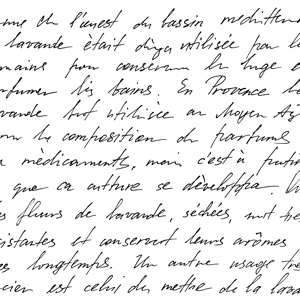
Verbal processing of receptive music experience can elicit insights and lead to change. It is the receptive experiences that are most often incorporated into ET. These are where a client listens to recorded music and responds, sharing their thoughts, feelings or imagery, either verbally or through another media, for example drawing, use of clay, or painting. Sampling and selecting preferred music in discussion with the counsellor can also act as a bonding and communication activity early in therapy.
Expression through playing with percussion instruments is a popular way, particularly for young clients, to reduce feelings of frustration and reflect on and communicate feelings.

Emotional literacy includes the ability to sense and locate emotions in the body, being able to recognise emotions, name them, communicate about them and speculate about causes. Emotional literacy assists the process of therapy, offering support for integration of emotional experiences, therapeutic release, and in developing emotional regulation and enhancing communication about emotion. Within ET this ability is developed indirectly through engagement with the various activities, and can be deliberately developed in order to increase positive therapeutic outcomes.
Emotion-Focussed Therapy founders Greenberg [2004] and Johnson [2019] argue for the central role of emotion in psychotherapeutic change, and provide clarity into the relationship between cognition and emotion. Emotion-focused Therapy is now considered an evidence-based approach worldwide. In general, after accessing, accepting and experiencing emotion, clients are more bale to make sense of their experiences.
The emotion-focused processes developed for ET are founded on the principles of EFT. Transition through the stages of emotion-focused work is supported by a range of the ET modalities. ET incorporates a wide range of emotion-focused activities that elicit client engagement, as well as emotional expression, emotional integration, cognitive understanding and energetic renewal.

Body Focus is an ET process that supports a client to connect with somatic experiences, body wisdom, and makes a significant contribution to self-awareness. In some ways similar to Gendlin's 'Focusing', the process supports a client to enhance somatic awareness and teaches the skills of attending to - and communicating about - somatic symptoms. Through relaxation, inner focus and guiding questions, clients can connect with areas of the body that seem to hold moods, feelings, tensions, or 'energies'.
We use art to record the internal discoveries on body outlines. This enhances self-awareness, supports reflection, articulation about internal states, and self-management.
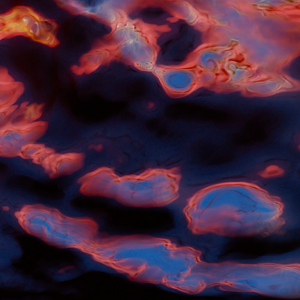
The ET style of bioenergetics is based on exercises developed in the USA in the 1960's by two psychiatrists, Alexander Lowen and John Pierrakos - students and colleagues of Wilhelm Reich. We have developed playful variations on these basic exercises that are suitable for adults, adolescents and children. The ET bioenergetic games are used as an adjunct to support positive session outcomes, and harness imagination, release somatic tensions and contribute to processing agitated emotions.
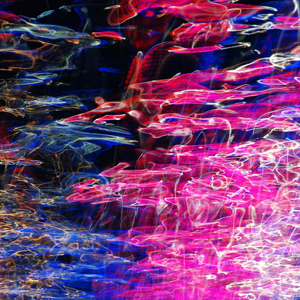
Dream exploration is an opportunity for reclaiming or re-integrating what has been overlooked or lost. Dreamwork can be explored through artwork, symbol work, movement, reflection in addition to writing, and role-play. Through dreams implicit and explicit issues can merge. Dream exploration offers the potential for issues to emerge for resolution.
Freud worked on the general assumption that dreams are not a matter of chance, but are associated with unresolved emotions, thoughts and interests. Jung moved away from Freud's fixed ideas on analysis of dream symbol meanings. He paid attention to the actual form and content of a dream, and wrote that to understand a dream you should examine it from every aspect - just as if you were to hold an unknown object in your hand and needed to examine every side of it. In Gestalt therapy, Fritz Perls extended dreamwork to include a role-play method to provide a deeper experience of the symbolic meanings contained.

The resilience-building Inner-Life Skills, activated when engaged in ET, enhance self-management abilities for clients. Development of inner-life skills activities has involved a growing synthesis of the offerings of western personal growth pioneers, the use of symbolic expression generated through using creative arts, and eastern mindfulness practices.
There are three types of inner-life skills: intrapersonal, interpersonal and transpersonal. Together they map details of three intelligences, named by Gardner (2006) as intrapersonal intelligence, interpersonal intelligence, and a proposed metaphysical or existential intelligence.
Inner-Life Skills are abilities that could be available to us all as part of our basic education. Inner-life skills allow greater self-understanding, self-awareness, self-expression and capacity for self-help.
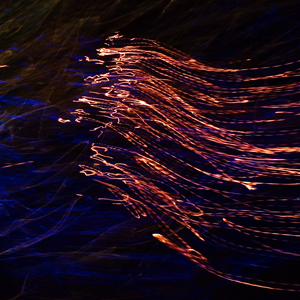
Visualisation is one of the frequently-used Inner-Life Skills offered in ET. Visualisation can support acknowledgment of strengths, emotional integration, self-awareness and can lead to enhanced self-esteem.
Symbols and imagery are often called the language of the imagination. The individual imagination is an expression of the unconscious. Artists, designers, composers and scientists, in fact all who make creative leaps in their work use their imagination. Each psyche has a creative potential. Visualisation activities help clients tap into that creative potential.
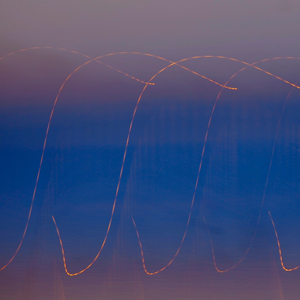
There are many approaches to developing relaxation used in ET. Teaching and practising relaxation contributes to clients' abilities in self-management. Using body outline drawings to map physical tensions has proved useful in developing awareness of the connection between somatic discomfort and emotional distress. This mapping is used as both a diagnostic tool and a means to support client self-awareness, thus leading to motivation to engage in relaxation.

Simple forms of internal focus, mindfulness and meditation are frequently shared in ET as self-help skills for anxious clients, and are woven though our courses. Within the counselling session brief meditations, grounding exercises and visualisations are offered to allow clients to connect with their emotional state. These activities are also a way of integrating emotion-focused processes.
